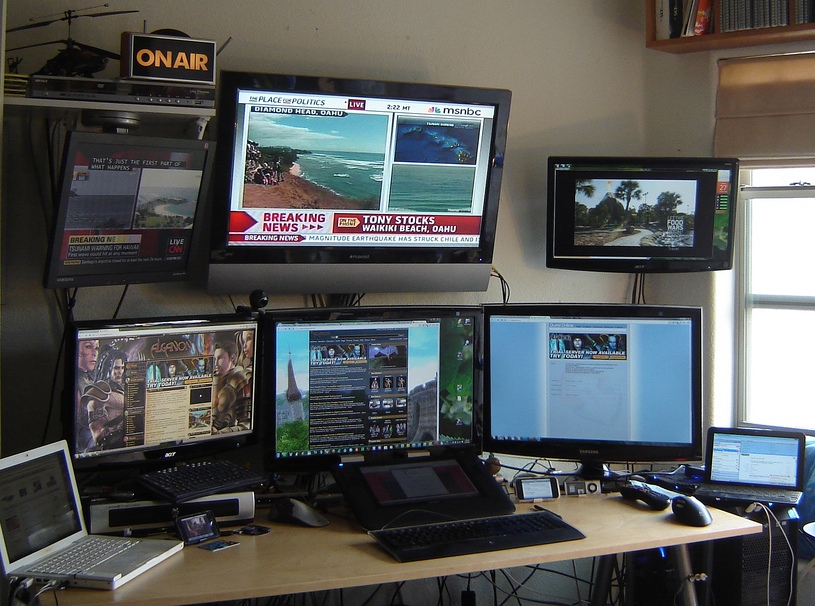
Image courtesy of Desk Topped
Screens, screens and more screens.
With smartphones, tablets, laptops, and of course the good old TV (or Apple TV for the gadget geeks) and cinema, everybody is staring at an electronic device. Lifestyles have certainly changed in the hyper-connected new social era, enabled by digital gadgets that are perpetually connected to the web.
Thanks to a blog post by Brian Solis on Google’s report The New Multi-screen World: Understanding Cross-Platform Consumer Behavior, we now have a better understanding of how screens dominate our lives.
Let me highlight some salient statistics from the report and what its implications are for us.
Our Average Time Spent On Screens
First, almost all our interactions with media are screen based. Essentially, this means that we’re not only logging on to Facebook or Twitter using our mobiles or tablets, but we’re also consuming the news and listening to music on a screen.
With such a huge dominance of the screen over newspapers, magazine and radio, it is clear that marketing content must now be crafted to fit a dynamic rather than static channel. Creative concepts and “big ideas” must be relevant to multi-media platforms, with visuals, narratives and interactive elements that optimise the properties of screens.
How We Spend Our Online Time
Second, our online time is spread between four media devices – smartphones, tablets, PCs/laptops, and TVs.
As you can see from the graphic above, our time per interaction is limited to 45 minutes or less. Consumption of content thus becomes one of snacking on bite-sized bits as opposed to full-length features.
The implications of this is that “marketing” content needs to be even more attractive and alluring than before.
As there are a quadrillion things that I want to do on my screens, the last thing I want to do is to stare through a boring cookie cutter presentation.
What We Do While Switching Screens
Third, we are using screens in sequence, switching from one to another.
Smartphones are the most common points to start (since they’re so convenient), followed by PCs/laptops and tablets. Often, screen switching occurs due to the need to do more complex work that may require a full keyboard to key in details. Interestingly, smartphones and tablets tend to work in exclusion of each other since both offer mostly similar features.
What We Do During Simultaneous Screen Usage
Fourth, many of us are using screens simultaneously.
If we look at the graphic above, we can see that it isn’t rare for somebody to email, browse the internet and “like” a Facebook post in quick succession. Often, the “main screen” being played in the background is the TV, while each of us would hold either a smartphone or a tablet to browse the web, tweet, or play a game.
While the TV is largely a passive entertainment device, the three smaller screens have a slightly different focus:
1) Computers keep us productive and informed. PCs or laptops are also the most common place for us embark on more complex activities.
2) Smartphones keep us connected. They are also the most common place to start for online activities.
3) Tablets keep us entertained. They’re also great for shopping, planning holidays, or booking of cinema tickets.
With the ubiquity of screens in our lives, it is important for marketers to consider how our content can be made more “screen-tastic”, ie vivid (sight, sound, movement), succinct, share-able, interactive and transactional.
Content also needs to be tailored to fit different sized screens, with mobile and tablet friendly versions being the norm rather than the exception. As consumers jump from one screen to another, a common digital memory is needed so that they needn’t repeatedly key in the same information for each transaction.

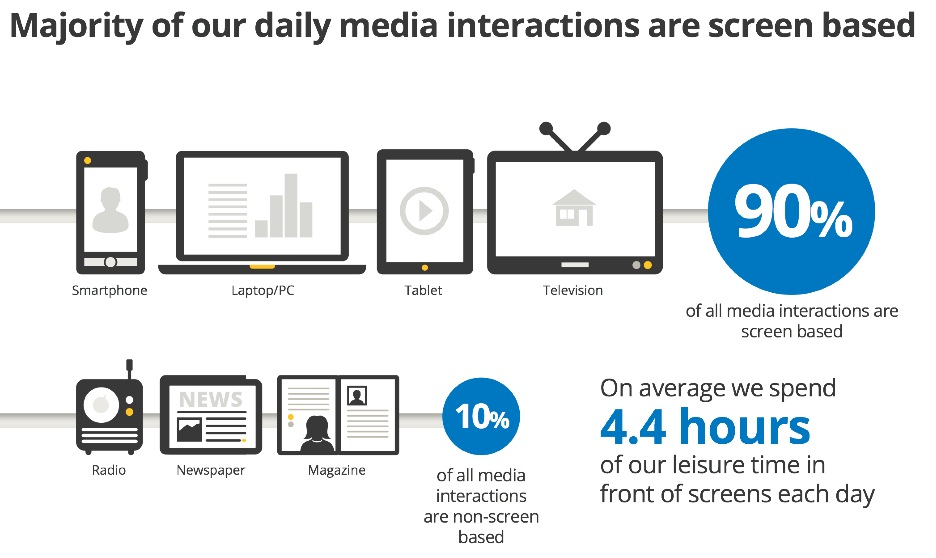
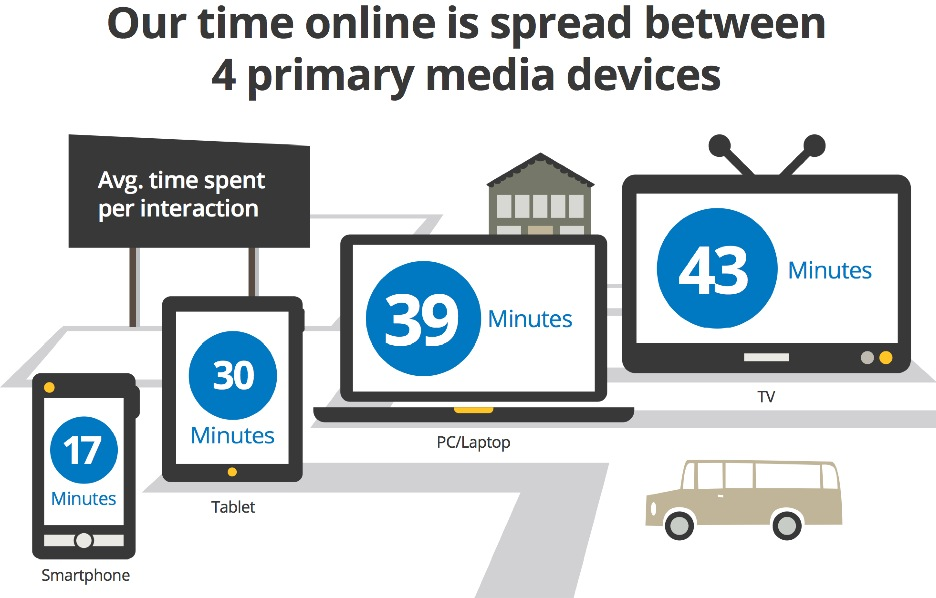
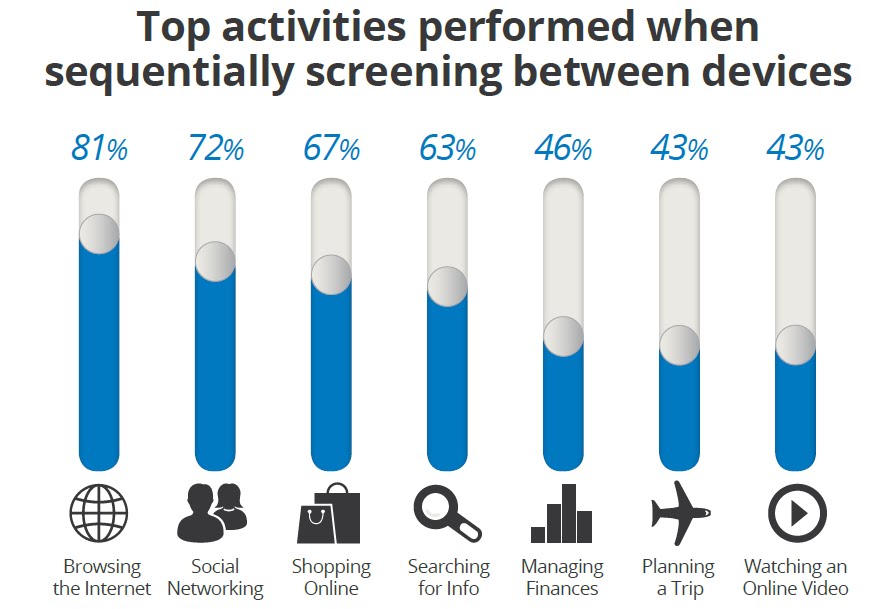
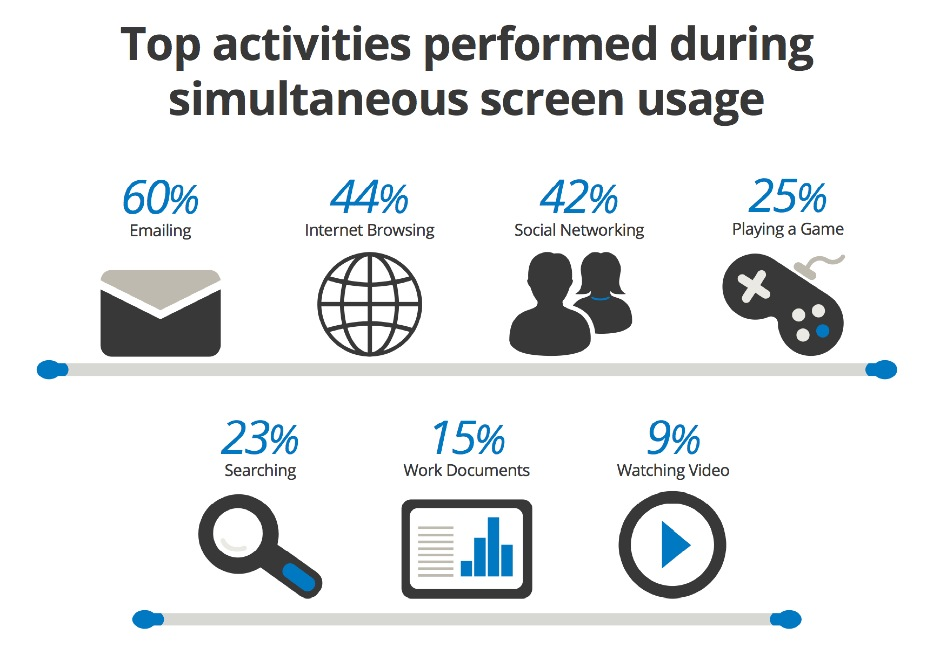
Sometimes we forgot those important facts to make it more “screen tastic”.